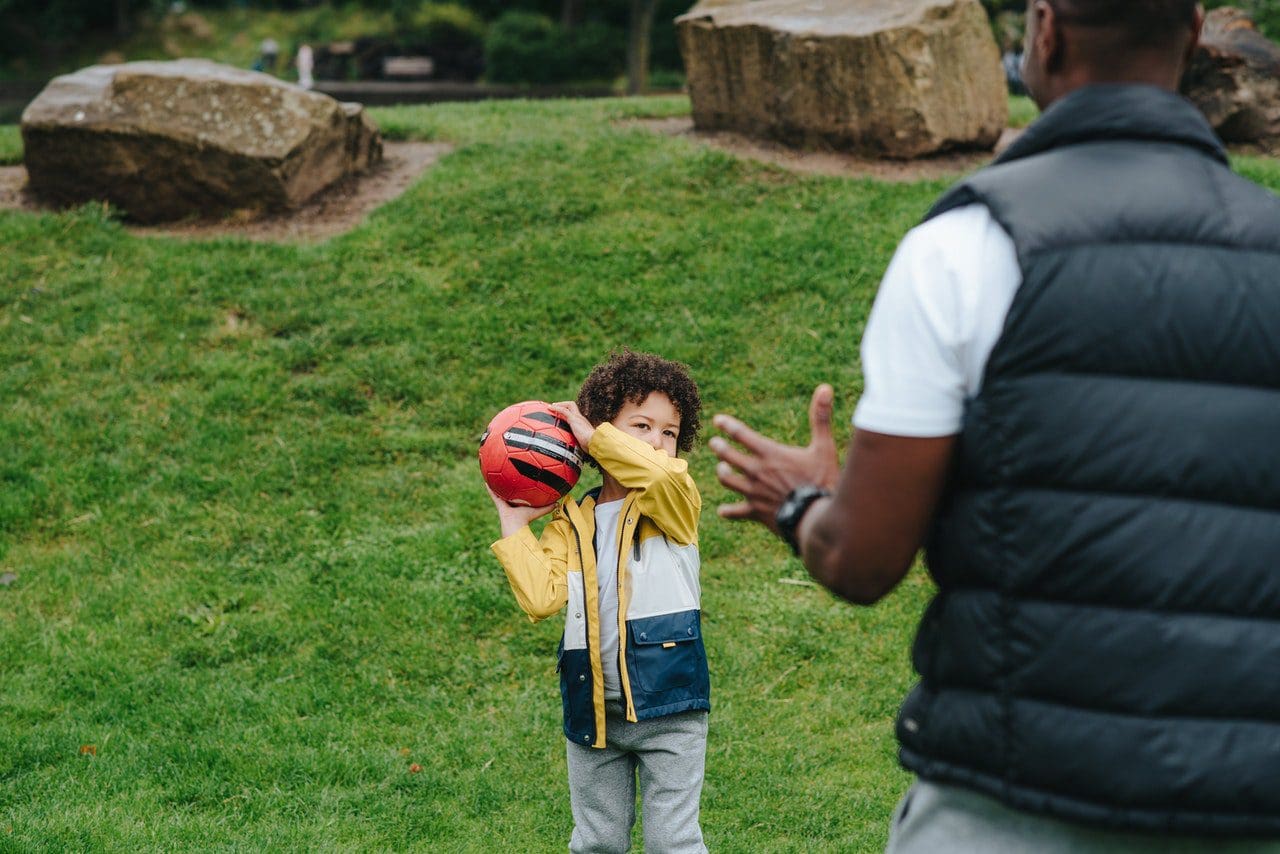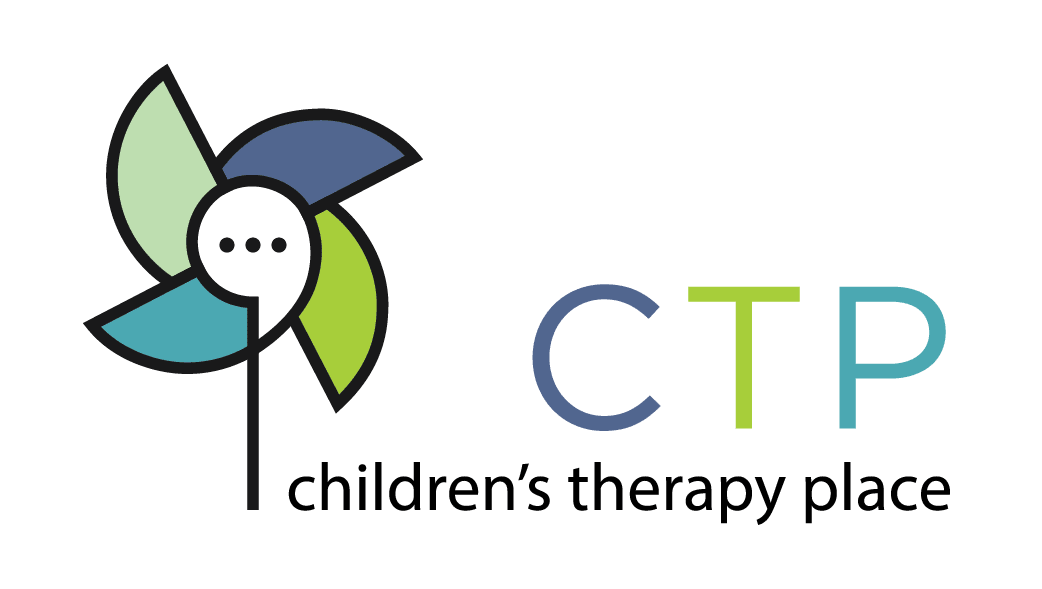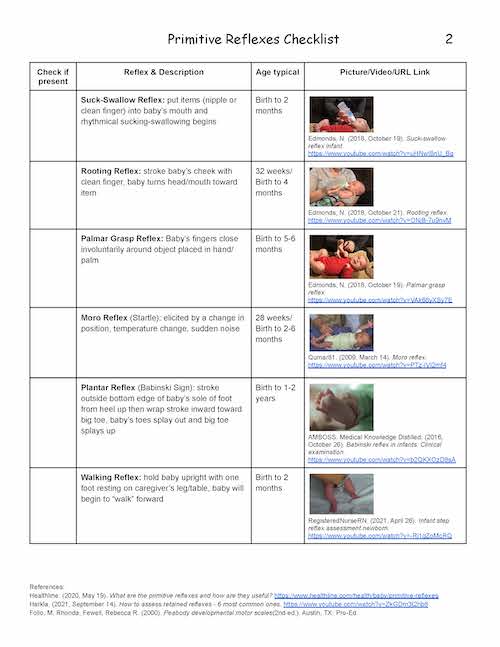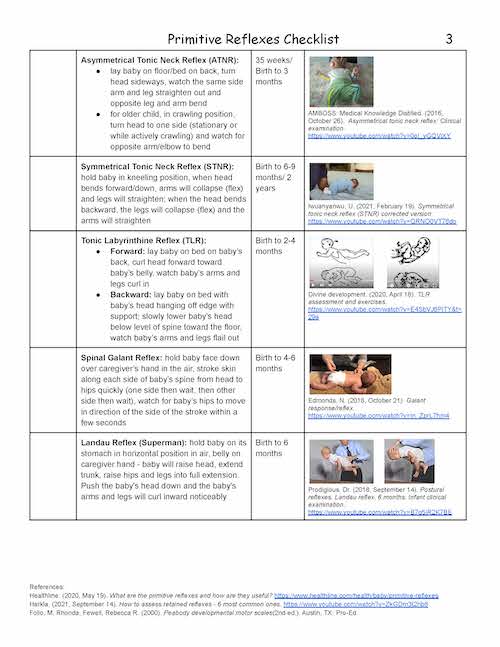Primitive Reflexes Checklist

By Megan S. Koyle, MOT, OTR/L
Hello! Have you ever wondered if your child is developing appropriately per his or her age? Do you experience concerns or questions regarding your child’s skills and abilities based on similarities or differences you observe between your child and his or her friends?
Sometimes it is a struggle to understand why some children display difficulties more than other children their age with certain skills, such as regulating their emotions, performing movements involving motor coordination, and attending or following instructions. Figuring out the cause of a displayed difficulty often requires lots of time, energy, and research, which, as we all know, is the golden ticket that always seems just beyond our grasp. Although it often takes professional assistance to determine the root cause of each child’s difficulties, the more prepared caregivers can be is always a bonus when seeking assistance, as children often are more comfortable with their caregivers than with new people (i.e., professionals).
Primitive Reflexes are a hot topic in the profession of Occupational Therapy (OT). There are a variety of opinions among Occupational Therapists, and inconclusive evidence in the research, regarding the applicability of retained Primitive Reflexes and the efficacy of reflex integration exercises as the root cause and consequential treatment method of children’s emotional regulation, motor coordination, and many other skill deficits. Retained primitive reflexes may be part of a child’s problem, but they may not.
Speaking as a professional, I have experienced a child display signs of retained reflexes, which provided support to the possibility of retained primitive reflexes being one root cause of that child’s difficulties. I have also experienced a child not display signs of retained reflexes, yet the complaints of the caregiver(s) indicated retained primitive reflexes as one possibility as a cause of the child’s struggles.
So, to promote caregiver knowledge, I have gathered some resources and created a checklist of what to look for, the ages primitive reflexes should appear and disappear, and demonstrations via publicly available online videos. This Primitive Reflexes Checklist is shown below, as well as attached to this blog post as a PDF for your printing convenience.
Should you have any questions or concerns that arise as you review this checklist with your child, please contact your local Occupational Therapy clinic to receive additional support and assistance in determining your child’s skills, abilities, and needs, so you can be sure your child is able to achieve and maintain age-appropriate independence in life!



